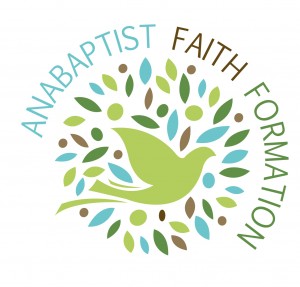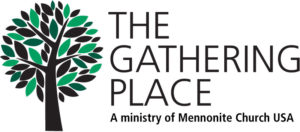Connect: Faith Formation in Challenging Times resources, October 24, 2020
Recording of Connect: Faith Formation in Challenging Times, October 24, 2020
Faith Formation Network options, May 6, 2020
Cornelius and Peter (This resource is part of “50 Days” faith formation, being offered by Springs Forth!Faith Formation, Inc)
Reflecting on Faith and Fear: “Time Such As This” is a FREE edition of the Rejoice devotional in the midst of a pandemic. These are wonderful, thoughtful reflections by some gifted Anabaptist writers.
Anabaptist Faith Formation Network – On this website you’ll find resources to equip disciples of Jesus in the Anabaptist tradition.
The Gathering Place (youth ministry connections/resources): http://thegatheringplace.us (this website is currently down)
Choosing Curriculum for Your Congregation
How Can I Be Sure Curriculum Meets the Practical Needs of the Students and Teachers? Consider the following questions pertaining to the selection of materials for children and youth.
- Are the stories based on biblical truths?
- Are scriptures the focus of the lesson?
- Does it represent the values of the congregation?
- Does it present the biblical story from the Anabaptist perspective?*
- If the curriculum is not Anabaptist, can it be adapted to be a better fit?
- Are times of worship and music included?
- Are objectives clearly stated?
- Is there adequate background information and helps for teacher preparation?
- Do the activities help the teacher and student affirm one another and build relationships?
- Are the lessons developmentally and age-appropriate?
- Do the lessons involve students in creative and experiential learning?
- Do the lessons provide options for a variety of learning styles?
- Do all elements of the lesson work together to fulfill the session’s objectives?
- Are a variety of activities provided for both small and large group interaction?
- Are various resources included: CD’s, posters, etc?
- How much preparation time is needed?
- Is the Bible background thorough but concise?
- Does the curriculum include a connection or take-home piece for the family?
- Are there suggestions for special needs?
- Will students become engaged in the suggested activities?
- Are the illustrations appropriate? (Multi-racial, all abilities, urban and rural)
- Do the lessons challenge students to make personal responses and applications?
- Do the lessons include opportunities for the teacher to model her/his faith through prayer, reading, reflection, etc.
- Is there Bible memory work included?
- Is the material focused on the learner rather than the teacher? *
*How do we determine what the Anabaptist perspective is? See the following list of values and perspectives. It is up to you, your committee, congregation, to determine how many of the above questions need to be answered in a positive manner as you consider curriculum.
Why Bother With Anabaptist Curriculum?
- Curriculum Grows Out of a People
a. Anabaptist curriculum is developed with authenticity that involves many people as writers, consultants, editors and readers, communicators, teachers and faith development specialists. It is tried in Anabaptist congregations before it’s final editing process and evaluated for ease of preparation and teaching, for practical theology and outcomes. So, our curriculum emerges from the people in our Anabaptist congregations and it is written for the people and families who share their pews and Sunday school rooms.
b. Selecting a curriculum is a congregational matter, not one that is decided on by individual teachers. It is a crucial issue in the faith development of children and young believers. There should be an overall plan for what is taught rather than a smorgasbord with repetitions and gaps.
- Offers a Unique Anabaptist Perspective – Every curriculum expresses a theology Look beyond packaging and ease of preparation to the words, activities and implications!
a. Curriculum designers are guided by the Confession of Faith in a Mennonite perspective. What are the implications for that?
i. A strong emphasis on following Jesus – (we call that discipleship).
ii. A strong emphasis that we as members of Christ’s body learn and grow together.
iii. A strong emphasis on discovering the power of the Holy Spirit to form faith, inform minds and transform lives.
b. All resources will stress the importance of:
i. Knowing Christ as Savior of the world and our ability to have a personal relationship with Him. (Salvation is a personal, redemptive experience in Jesus Christ).
ii. Peace with God and peacemaking in our world, following a Jesus path of peace – a core component.
iii. The Bible and the Holy Spirit are our guides for faith and life.
iv. Believer’s Baptist is an inward baptism of the Holy Spirit and an outward baptism of water in the midst of the congregation.
v. Discipleship means to live a life following Christ.
vi. Simple lifestyles grow out of Jesus’ teachings.
vii. Community and cooperation are emphasized.
viii. Service and mission grow out of discipleship.
ix. Worship is a celebration of God’s activity in the world.
Anabaptist curriculum may pay special attention to global issues, have more stories of folks who have chosen missions and service, a greater and intentional appreciation for multicultural issues, gender issues, generational strengths than non-denominational products.
Story Prompts for Creating Your Memory Bracelet
The following resources are available to help church librarians manage and promote church’s library.

